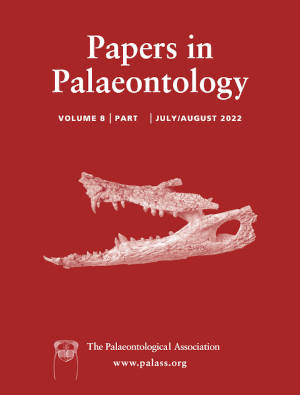Article: Bone histology of dinocephalians (Therapsida, Dinocephalia): palaeobiological and palaeoecological inferences
Publication: Papers in Palaeontology
Volume:
8
Part:
1
Publication Date:
2022
Article number:
e1411
Author(s):
Mohd Shafi Bhat, Christen D. Shelton, and Anusuya Chinsamy
DOI:
10.1002/spp2.1411
Abstract
Abstract We investigate the bone histology of multiple skeletal elements of dinocephalian taxa from the middle Permian Tapinocephalus Assemblage Zone of the Karoo Basin of South Africa. The results show that the cortex is predominantly composed of fibrolamellar bone, suggesting rapid osteogenesis for these basal non-mammalian therapsids. However, in a few skeletal elements, growth marks interrupt the deposition of the fibrolamellar bone tissue, indicating periodic arrests in growth. Ontogenetic differences are observed among the specimens studied: the majority have fibrolamellar bone deposited up to the peripheral margin of the bone wall, indicating continuous fast growth right up to the time of death, while a few specimens have avascular lamellar bone tissue with multiple, closely spaced rest lines, indicating maturity and a slowing down of growth prior to death. Several taxon-specific histological variations in terms of orientation of vascular canals and primary osteons, incidence of growth marks, and extent of secondary medullary reconstruction suggest slight differences in growth trajectories between the different taxa. The skeletal elements of the herbivorous taxa (Keratocephalus, Moschops and Struthiocephalus) and the omnivorous Jonkeria, previously studied, are characterized by a thick cortex, and extensively developed medullary spongiosa, suggestive of semi-aquatic habits. In contrast, the femoral histology of the carnivorous Anteosaurus suggests that it was more terrestrial.
